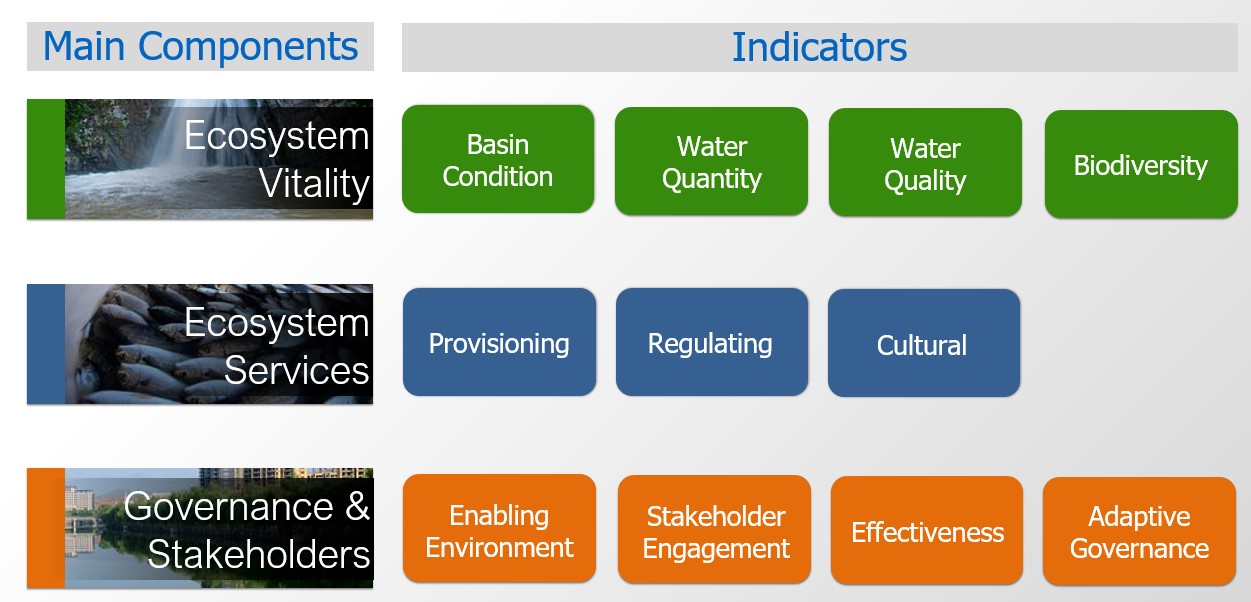Indicator System Structure
August 12, 2021 at 11:24 PMA set of indicators transparently assesses the health of freshwater systems in their ecological and social dimensions, quantifying and mapping the multiple benefits that freshwater naturally provides. The Freshwater Health Index focuses on three main components:
Ecosystem Vitality: The integrity and functioning of the ecosystem itself (freshwater and its associated watershed).
Ecosystem Services: The benefits to people provided by a freshwater ecosystem.
Governance & Stakeholders: The structures and processes by which people make decisions related to water resources.
Each of these components is assessed with a suite of measurable indicators and sub-indicators (detailed in the following sections) that are aggregated into an index. Aggregation follows a hierarchical clustering process, i.e., specific scores are calculated for sub-indicators, which are then aggregated into the indicator level and, finally, indicator scores are aggregated at the component level. Ultimately, three main scores comprise the FHI, one for each of the components described above. More specific guidelines on the aggregation process is provided on the last session of this chapter (2.5. Indicator Aggregation).
The values of the sub-indicators are transformed into a common scale, i.e., 0 to 100, with 100 being more "sustainable" and 0 being less "sustainable". Consequently, the scores of the indicators and components also follow the 0 to 100 scale. The importance to present score for each of the three components is the depiction of which components are functioning better toward freshwater sustainability and which need further attention to increase overall sustainability. For instance, high values across all three of the FHI components are indicative of a more sustainable freshwater ecosystem (or greater freshwater health) than scores at the lower end of the scale.
When FHI is applied for the first time for a basin of interest, a baseline evaluation of freshwater health can be established, providing a clear picture of freshwater health under current conditions. The FHI analysis can be repeated over time as monitoring tool of the basin health, as well as, to examine the effectiveness of interventions intended to improve service delivery or ecosystem health. Additionally, when associated with scenarios development, the FHI analysis can be used to highlight the trade-offs between services and beneficiaries that are likely to occur under different future scenarios, e.g., of land-use change, infrastructure development, climate change, and other drivers that threaten ecosystem function and service delivery.
